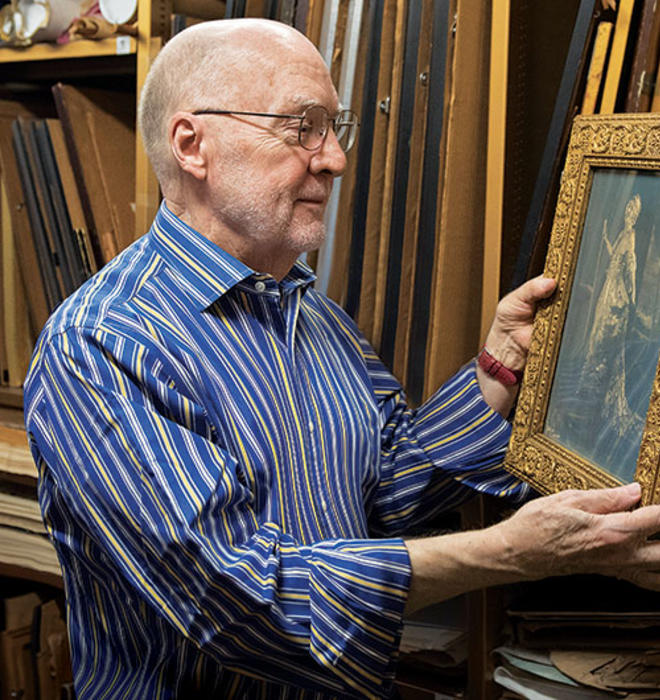
APRIL 17, 1932–JAN. 24, 2016
Robert A. Tuggle ’54 knew everything about everyone at the Metropolitan Opera. The most-sung opera? He knew that La Bohème, with 1,295 Met performances at last count, was far ahead of Aida. The singer with the most appearances onstage? He knew the answer was the tenor Charles Anthony, with 2,928. Tuggle also knew a secret about Anthony: He was born Charles Caruso. The Met already had its Caruso, so this one put his middle name to use.
Tuggle knew details like those because he worked behind the scenes at the Met for 50 years, the last 34 as the Met’s archivist — its institutional memory. It was the ideal role for Tuggle, who had a researcher’s talent for assembling information. That was apparent in his book, The Golden Age of Opera, an encyclopedic tribute to early-20th-century stars like Rosa Ponselle and Caruso (Enrico, not Charles Anthony). The text shone with what the public-radio commentator Fred Plotkin called “the full measure of its author’s waspish wit, formidable curiosity, and uncompromising standards.” But Tuggle put more into the book than the writing. For illustrations, he reached into his immense personal trove of lavish photographs by the Met’s longtime photographer, Herman Mishkin, a collection he had assembled over the years.
Tuggle’s passion for collecting was apparent at Princeton, where he majored in music. “He was this very refined young man on campus with a huge record collection, and everybody knew it,” says his classmate Wayne Lawson ’54, who retired in 2014 as executive editor of Vanity Fair magazine. Tuggle’s tastes were wide-ranging in those early days of LPs. Lawson remembers that Tuggle owned the original-cast recording of The Rake’s Progress, conducted by its composer, Igor Stravinsky.
But Tuggle’s favorites came from the 19th century. “There was a wonderful Wagner course [at Princeton], which I took,” recalls Lawson, “and I would say Wagner was the greatest composer, and he would say, ‘I think Verdi was the greatest.’” For Tuggle, it was a lasting love. He wrote his senior thesis on the musical genius behind such classics as Nabucco, Aida, and Il Trovatore, and in April, the Met dedicated a performance of Verdi’s Simon Boccanegra to Tuggle. The tenor Plácido Domingo sang the title role, and James Levine conducted.
Paradoxically, though, Tuggle maintained that the greatest singer was one known for Wagner, not Verdi — the soprano Kirsten Flagstad, whom he first heard in person while he was an undergraduate. He said she set a “standard for singing no other singer in my lifetime has provided” and spent years writing her biography, still unfinished when he died.
At the Met, Tuggle’s legacies are prized by everyone from armchair opera buffs to musicologists doing serious research. About 15 years ago, he persuaded the Met to computerize its database, replacing the record books and index cards he had long relied on. He thus made the Met’s history available to anyone who wanted to dive into details about every performer and every performance since the Met opened with Gounod’s Faust on Oct. 22, 1883.
James Barron ’77 is a reporter at The New York Times. His book The One-Cent Magenta: Inside the Quest to Own the Most Valuable Stamp in the World will be published next month.
For the record
The story has been updated to correct Fred Plotkin’s description of The Golden Age of Opera.
VIDEO: Robert Tuggle ’54
Courtesy the Metropolitan Opera






No responses yet